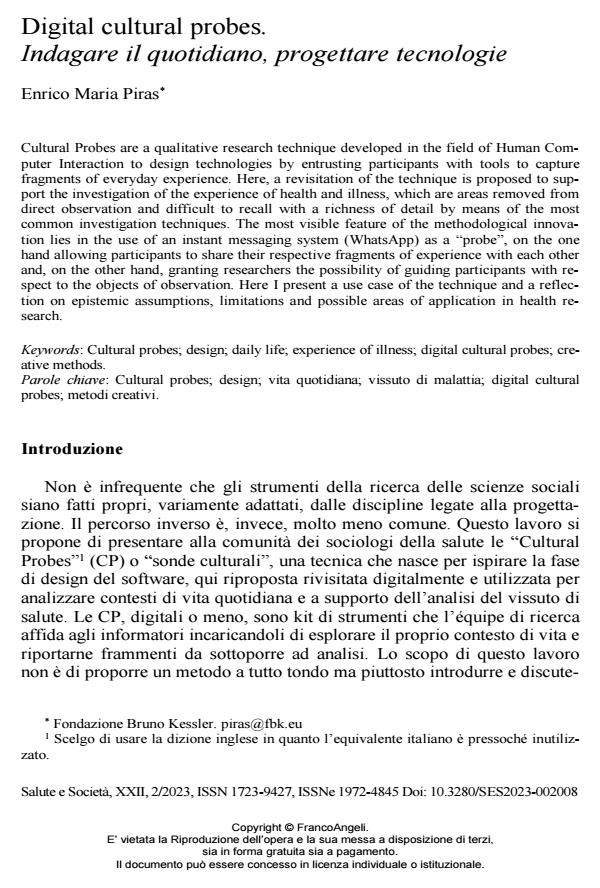Digital cultural probes. Indagare il quotidiano, progettare tecnologie
Titolo Rivista SALUTE E SOCIETÀ
Autori/Curatori Enrico Maria Piras
Anno di pubblicazione 2023 Fascicolo 2023/2
Lingua Italiano Numero pagine 12 P. 80-91 Dimensione file 425 KB
DOI 10.3280/SES2023-002008
Il DOI è il codice a barre della proprietà intellettuale: per saperne di più
clicca qui
Qui sotto puoi vedere in anteprima la prima pagina di questo articolo.
Se questo articolo ti interessa, lo puoi acquistare (e scaricare in formato pdf) seguendo le facili indicazioni per acquistare il download credit. Acquista Download Credits per scaricare questo Articolo in formato PDF

FrancoAngeli è membro della Publishers International Linking Association, Inc (PILA)associazione indipendente e non profit per facilitare (attraverso i servizi tecnologici implementati da CrossRef.org) l’accesso degli studiosi ai contenuti digitali nelle pubblicazioni professionali e scientifiche
Cultural Probes are a qualitative research technique developed in the field of Human Com- puter Interaction to design technologies by entrusting participants with tools to capture fragments of everyday experience. Here, a revisitation of the technique is proposed to sup- port the investigation of the experience of health and illness, which are areas removed from direct observation and difficult to recall with a richness of detail by means of the most common investigation techniques. The most visible feature of the methodological innova- tion lies in the use of an instant messaging system (WhatsApp) as a "probe", on the one hand allowing participants to share their respective fragments of experience with each other and, on the other hand, granting researchers the possibility of guiding participants with re- spect to the objects of observation. Here I present a use case of the technique and a reflec- tion on epistemic assumptions, limitations and possible areas of application in health re- search.
Parole chiave: Cultural probes; design; vita quotidiana; vissuto di malattia; digital cultural probes; metodi creativi.
Enrico Maria Piras, Digital cultural probes. Indagare il quotidiano, progettare tecnologie in "SALUTE E SOCIETÀ" 2/2023, pp 80-91, DOI: 10.3280/SES2023-002008